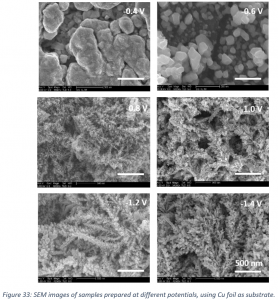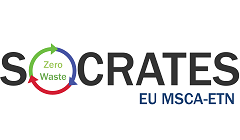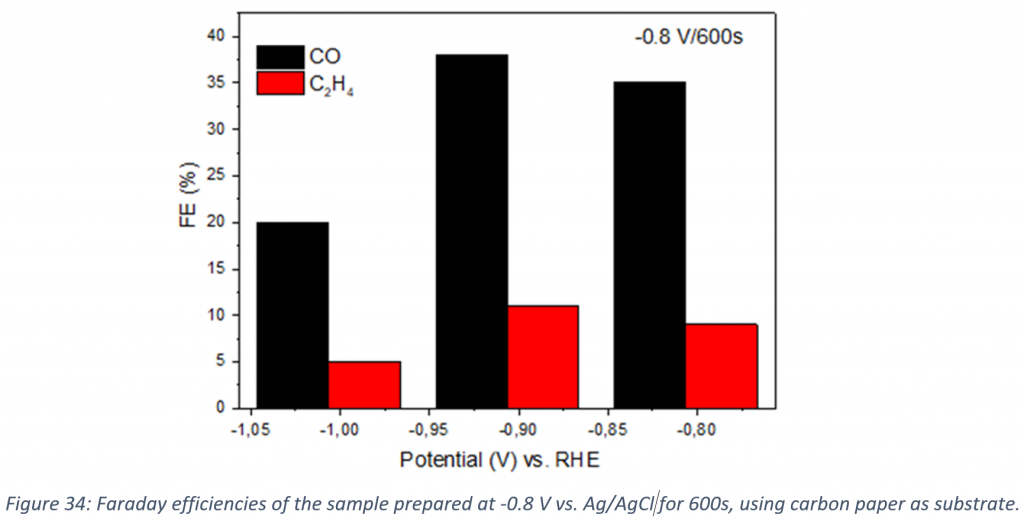
My name is Shuang Yang. I joined the SOCRATES project only in August 2019, but I am very happy to be able to participate to this ETN. Before traveling to The Netherlands, I was studying at the University of Science and Technology of China where I obtained my Master in Material Science and Engineering. I also hold a Bachelor degree in Advanced Materials and Devices (Sichuan University). Now you can find me in the lovely city of Utrecht in the center of The Netherlands, working on my PhD thesis. Even though I just started living and working in this historic city, its open-minded and multi-cultural attitude makes me impressed and feel like home.
In this project, my focus lies on the investigation of the use of the residual matrix from industrial process residues as potential heterogeneous catalysts (i.e., Cu flotation tailings, iron (Fe)-rich sludges from electrolytic zinc refining, fayalitic slags and incineration bottom ashes). The emerging electrocatalytic CO2 conversion to value-added chemicals coupled with renewably generated electricity (i.e., wind energy, solar energy) will be applied and further developed with these waste-derived catalysts. By integrating the industrial waste valorization and CO2 conversion, we will build a self-sustainable cycle to obtain a green and effective future.
Feel free to contact me if you are interested in my research. Here is my email: s.yang1@uu.nl.
Problem statement & objectives
Excessive CO2 emissions from the utilization of traditional fossil energy sources cause severe environmental issues, hindering the sustainable development of our industrial society. The CO2 electroreduction reaction represents a viable alternative to help closing the anthropogenic carbon cycle and to convert intermittent electricity from renewable energy sources to chemical energy in the form of fuels and chemicals. At present, we are focusing on the use of fayalitic slag, which contains a large amount of metals (e.g. Fe, Si, Zn, Al, Pb, Cu) that can be both useful and harmful for catalysis. Among these various elements, Zn, Pb and Cu have been proved to be active in electrochemical CO2 reduction. Nanomaterials with different structures and compositions will be fabricated by these metals extracted from fayalitic slag, and further utilized in CO2 electroreduction. Combining with operando microscopy and spectroscopy techniques, reaction mechanism and vital intermediates which are still debatable would be revealed. This should lead to an improved understanding of how to further improve their performance.
The objective of this project is to investigate the use of the residual matrix from industrial process residues as potential heterogeneous catalysts (i.e., Cu flotation tailings, iron (Fe)-rich sludges from electrolytic zinc refining, fayalitic slags and incineration bottom ashes).
Methods
- Extraction of Cu/Zn/Pb from fayalitic slag through NH4Cl leaching.
- Electro-deposition of Cu/Zn/Pb metals on carbon paper and Cu foil.
- Electrochemical CO2 reduction performance evaluation.
Results obtained during the reporting period
- Extraction of Cu/Zn/Pb from fayalitic slag through NH4Cl leaching. Through NH4Cl leaching, Cu, Pb and Zn were successfully extracted from fayalitic slag as stable complexes. UV-vis and ICP-OES results suggested that the highest leaching efficiency can be reached when treating 4 g of fayalitic slag with 12 mL 5 M NH4Cl solution at room temperature for 24 h.
- Electro-deposition of Cu/Zn/Pb metals on carbon paper and Cu foil. During electrolysis, cations obtained in solution after the above mentioned step were reduced at the cathode in the metallic, zero valence state. By controlling the potential applied, different metallic phases could be deposited with different morphologies.
- (1) When keeping electrolysis time fixed at 600s, tree-like structures composed of nanoparticles (20 nm-80 nm) were formed on Cu foils under potential ranging from -0.8 V to -1.4 V. It is worth to note that the particle size increased with increasing potential, for instance, the one at -0.8 V has the smallest size of 20 nm. Interestingly, samples obtained at more positive potentials showed a completely different large-size block morphology.
- (2) EDS results indicated that only Cu could be deposited at -0.4 V. With increase of potential, other metals began to appear, Pb, Ni and Zn could be observed at -0.6 V, -1.2 V and -1.4 V respectively. These results clearly show that the target metals have grown on Cu foils successfully.

- (3) A similar tree-like morphology can also be found on carbon paper. However, there is no clear rule observed in particle size change when varying the applied potential. The samples obtained at -1.4 V and -1.2 V respectively showed the smallest and biggest size of particles.
- Electrochemical CO2 reduction performance evaluation. The preliminary electrochemical CO2 reduction evaluation was conducted for carbon paper based electrodes. The one prepared at -0.8 V showed Faraday efficiency of 11% for ethylene and 38% for CO at a current density of 5 mA cm-2, which is higher than the one prepared at -1.0 V.
Conclusion
- Cu, Pb and Zn were successfully extracted from fayalitic slag through NH4Cl leaching.
- Through electrodeposition, cations obtained from fayalitic slag could be deposited onto different substrates as metallic phase. Morphology and composition can be controlled by changing the applied potential.
- Electrodes with carbon paper as substrate have a promising electrochemical CO2 reduction performance.
Outlook for future work
- Repeat preparation of carbon paper based samples
- Catalytic performance of all samples
- More basic structural characterization for all samples
- Operando characterization to study the reaction mechanism


